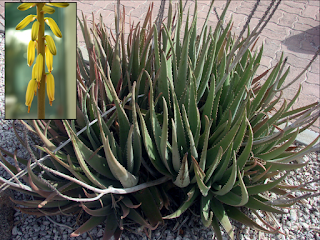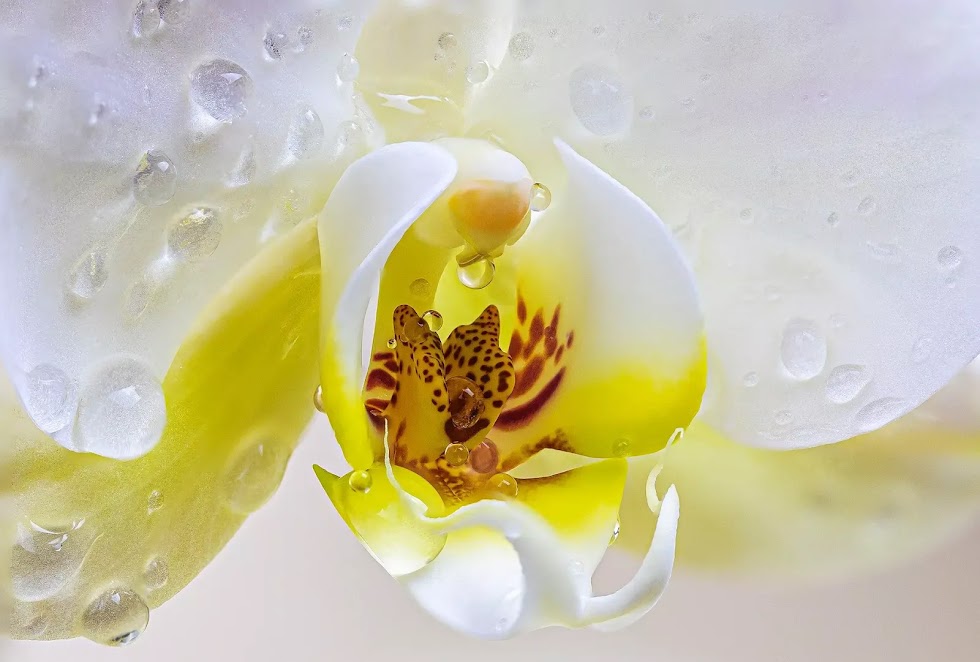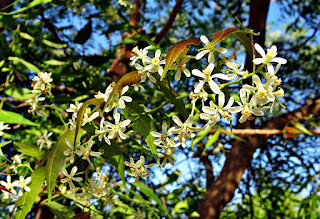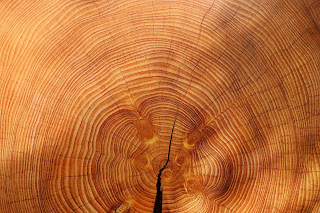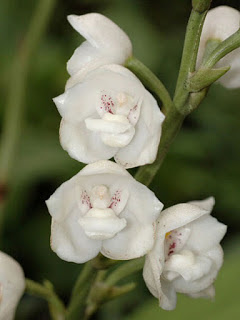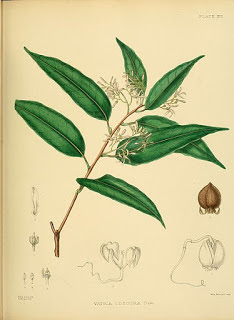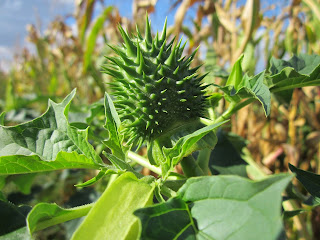
Stramonium or the jimson weed is also known as 'the devil's grass. The plant got this name because of its poison seems to drive the victim made as if he were possessed by the devil.
The tropane alkaloids in the plant can cause serious distortion of the eyesight. Ingestion of jimson weed induces delirium, blurred vision, drying of mouth, tachycardia, hyperthermia, mydriasis and amnesia. Symptoms of jimson weed intoxication may last 24 to 48 hours. In small doses, however, these poisons can be used to treat certain illnesses.
Stramonium found in certain drugs is extracted from the leaves of this plant. It acts as a sedative and eases nerve and rheumatic pains. Stramonium leaves are also used to make special cigarettes for the treatment of asthma. The seeds of the plant provide an oil which is used in lotion to be rubbed on the body.
For further reading:
- Bhakta Prasad Gaire and Lalita Subedi. 2013. "A review on the pharmacological and toxicological aspects of Datura stramonium L.". Journal of Integrative Medicine. 11(2):73-79.
- Krishna Murthy Naik V, Sudhakar Babu K, Latha J and Beulah Kolluru. 2018. "A review on Phytochemical and Pharmacological activity of Datura stramonium ". Research Journal of Pharmacognosy and Phytochemistry. Academic OneFile.
